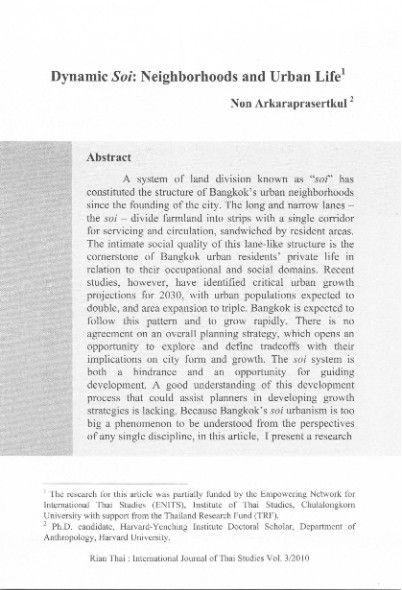Non Arkaraprasertkul
Abstract
A system of land division known as "soi" has constituted the structure of Bangkok's urban neighborhoods since the founding of the city. The long and narrow lanes – the soi – divide farmland into strips with a single corridor for servicing and circulation, sandwiched by resident areas. The intimate social quality of this lane-like structure is the cornerstone of Bangkok urban residents' private life in relation to their occupational and social domains. Recent studies, however, have identified critical urban growth projections for 2030, with urban populations expected to double, and area expansion to triple. Bangkok is expected to follow this pattern and to grow rapidly. There is no agreement on an overall planning strategy, which opens an opportunity to explore and define tradeoffs with their implications on city form and growth. The soi system is both a hindrance and an opportunity for guiding development. A good understanding of this development process that could assist planners in developing growth strategies is lacking. Because Bangkok's soi urbanism is too big a phenomenon to be understood from the perspectives of any single discipline, in this article, I present a research project that is trans-disciplinary, cross-cultural, and historical in design. This research draws from the data and methods of history, geography, and political science to analyze key urban issues. This project seeks to understand in what ways the soi neighborhoods are the resilient element of Bangkok's urban culture that many claim them to be. Only firsthand experience in the soi communities can answer such questions and shed light on this unlikely phenomenon, with ramifications for developing urban spaces and aging metropolises alike.
(Published in Rian Thai: International Journal of Thai Studies, Volume 3/2010, Page 155-184)
Full Text : Download
